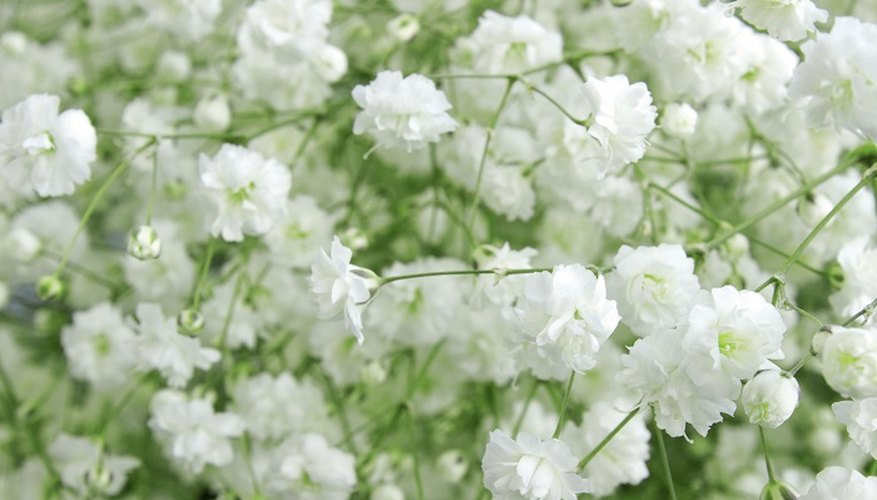Also known as baby's breath, gypsophila is a popular choice for flower arrangements and bridal bouquets. The light, airy masses of small white or pink flowers make a good contrast to larger flowers in the garden.
Buy gypsophila
Look for plants at nurseries in spring and summer, or seed packets all year round.
Buy gypsophila in 10 cm (4 inch) containers or buy seeds.
Choose healthy-looking plants with signs of new growth in leaves and flower buds.
Plant gypsophila
Plant gypsophila in full sun in well-drained soil.
Add a light application of organic fertiliser to the planting hole.
Place the plants no deeper than the depth of the containers they were growing in.
Place the plants 45 cm (18 inches) apart.
Mulch around but not on top of the plants with 7.5 cm (3 inches) of organic compost.
- Plant gypsophila in full sun in well-drained soil.
- Mulch around but not on top of the plants with 7.5 cm (3 inches) of organic compost.
Water well until the soil is completely moist.
Plant seeds in the garden in late spring. Keep the area moist until the seeds have germinated.
Gypsophila care
Cut off any remaining stems from the previous year in early spring using bypass pruners.
Apply a light application of organic fertiliser on top of the soil, following packet directions.
- Cut off any remaining stems from the previous year in early spring using bypass pruners.
- Apply a light application of organic fertiliser on top of the soil, following packet directions.
Mulch around but not on top of the plants with 7.5 cm (3 inches) of organic compost.
- Plant gypsophila in full sun in well-drained soil.
- Mulch around but not on top of the plants with 7.5 cm (3 inches) of organic compost.
Water well weekly until soil is completely moist in summers with no rainfall.
